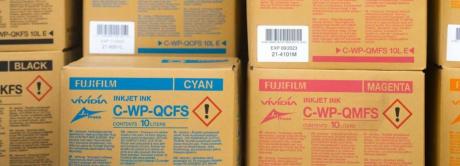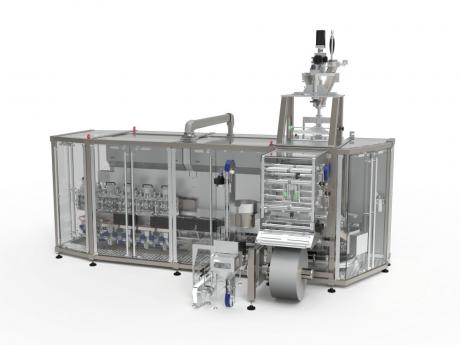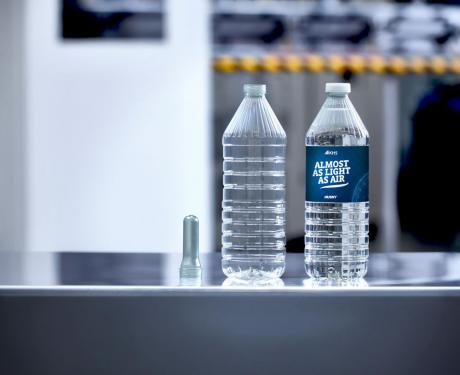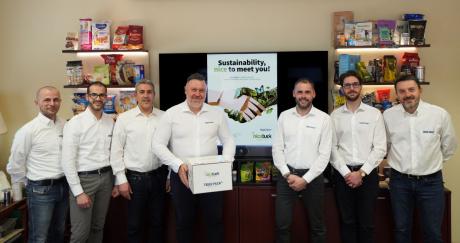Black plastics have been notoriously difficult to detect, but recent technological developments have made it possible to sort them not only by color but also by polymer, unlocking economic value for recycling companies. This is a game changer in the fast-evolving plastic packaging sector, and Stadler, a German supplier of sorting plants for the recycling industry, is experiencing an increase in the demand for systems capable of recovering all black plastics from the waste stream. Through effective collaboration among all players in the industry’s value chain, a financially and environmentally beneficial circular economy is possible.
Plastic packaging serves important functions in modern life, and it is an exceptional product which, however, has a significant end-of-life problem. This is especially true of black plastic, which until very recently couldn’t be detected with the available technology, Near Infrared (NIR). The emitter shines a light on the material and the sensor takes a reading of the energy that is reflected back. However, carbon black absorbs the light, so the signal doesn’t bounce back and the sensor doesn’t get a reading. This means that black plastic is undetectable with the technology that is widely deployed in the recycling infrastructure.
Black plastic makes up a significant part of household waste which, if not recovered, will be incinerated or sent to landfill. This has not only environmental implications but also financial. Another important consideration is that more and more packaging is made of black plastic, as more recycled content is used. When recycling post-consumer packaging, if it’s not rigorously sorted by color, the resulting output is a grey resin. This can’t be taken back to white, so many converters add carbon black to obtain a very uniform, more appealing color. We, as a society, want more recycled content, we will see more and more black material in the waste stream. Consequently, packaging will continue to trend towards a darker color.
Different industries involved in the plastics value chain have been researching solutions to the black plastics issue, and today there are different ways of recovering these materials. A first solution is a sensor-based dry sorting system, which uses NIR sensors with detectable black additives to detect the different types of polymers. There are also other types of sensors capable of sorting black materials, also by polymer. With this sensor-based dry sorting system, it is possible to accurately sort black polyethylene, polypropylene, PET and polystyrene.
Another solution is a wet density sorting system based on the flotation principle. The ligher polyethylene and polypropylene float, while the heavier PET, PVC and polystyrene tend to sink. The drawback of this system is that, not only is it costly due to the filtration process, the need for water, cleaning, etc., but it is not capable of sorting by polymer, so that a circular process is impossible.
However, the biggest advancement has been in sensor technology. The situation has evolved to the point that today companies are able to separate black not only by color but also by polymer. This is very important because if the sorter ejects all black materials together, there could be as many as 15 different polymers in the mix, which can’t easily be remanufactured. This is a very recent development: 5-6 years for black color detection and polymer sorting. This is a true game changer because it creates economic value and makes it possible to recycle these materials that would otherwise go to landfill or incineration.
The ability to detect black plastics means that there will be more of them in the recycling chain. Obviously, there are limitations: they can’t be used to produce white products, and they can’t always make food-grade packaging. It is useful to find other ways to use black plastics. It won’t necessarily be for consumer-facing products, but they could be used to manufacture items such as pallets, buckets or railroad ties, etc. It’s about sorting the plastic effectively and providing it as a feedstock to the advanced recycling sector.
The latest technological developments and the consumer pressure for more recycled content in packaging are bound to drive continued growth in demand for sorting plants capable of recovering all blacks out of the waste stream.
Stadler has experienced a sharp increase in the interest in these solutions and it is at the heart of this evolution in the industry. Enrico Siewert, Director of Product and Market Development affirmed:
We now have multiple partners who have developed technology to detect black plastics, so we have the ability to design systems to recover these materials tailored to our individual customers’ operational requirements and capital investment. We have completed several projects for some of the most advanced light packaging recycling plants in Europe, and we are working to develop many more. The demand is extremely strong for this technology, and I see this trend continuing in the future. More black plastic is going into the waste stream and the technology to mine these materials is catching up fast.









